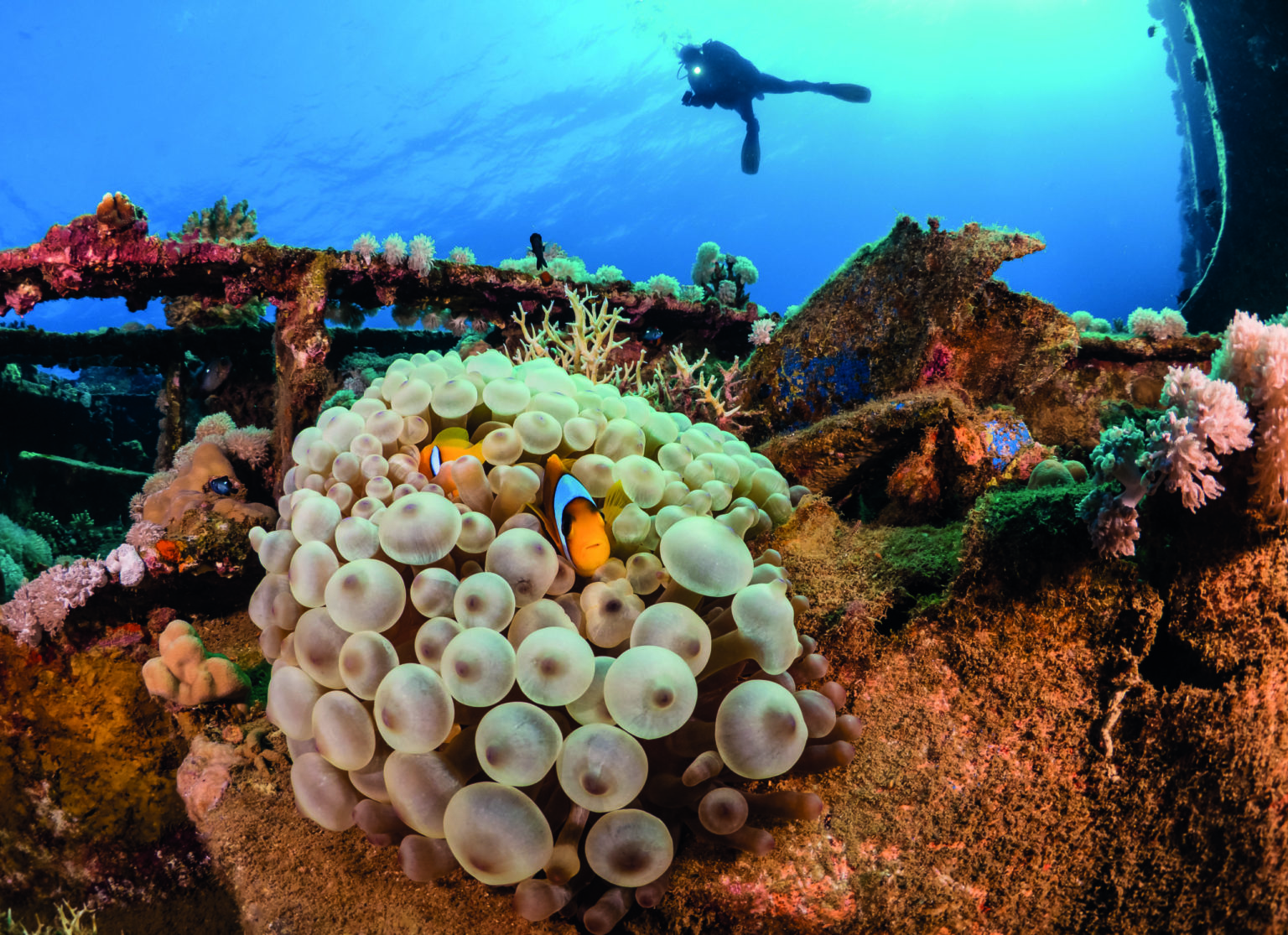Paul ‘Duxy' Duxfield offers more advice that can aid your framing and graphical sense underwater.
Not all these tips are immediately obvious as being directly linked to composition, but nevertheless are very important in maintaining a smooth, comfortable workflow which gets your mind in the right place for taking frameable pictures.
A common request I get asked on my escorted trips is to help with framing and composition, and of course, I love doing my best to help in this regard. Regardless of the camera being used, it’s something that can be of benefit to all concerned – from GoPro to DSLR, it’s the fundamental skill that underpins all photography.
The good news is that we’re born with this skill and all we need to do is develop and nurture it.
Get Closer
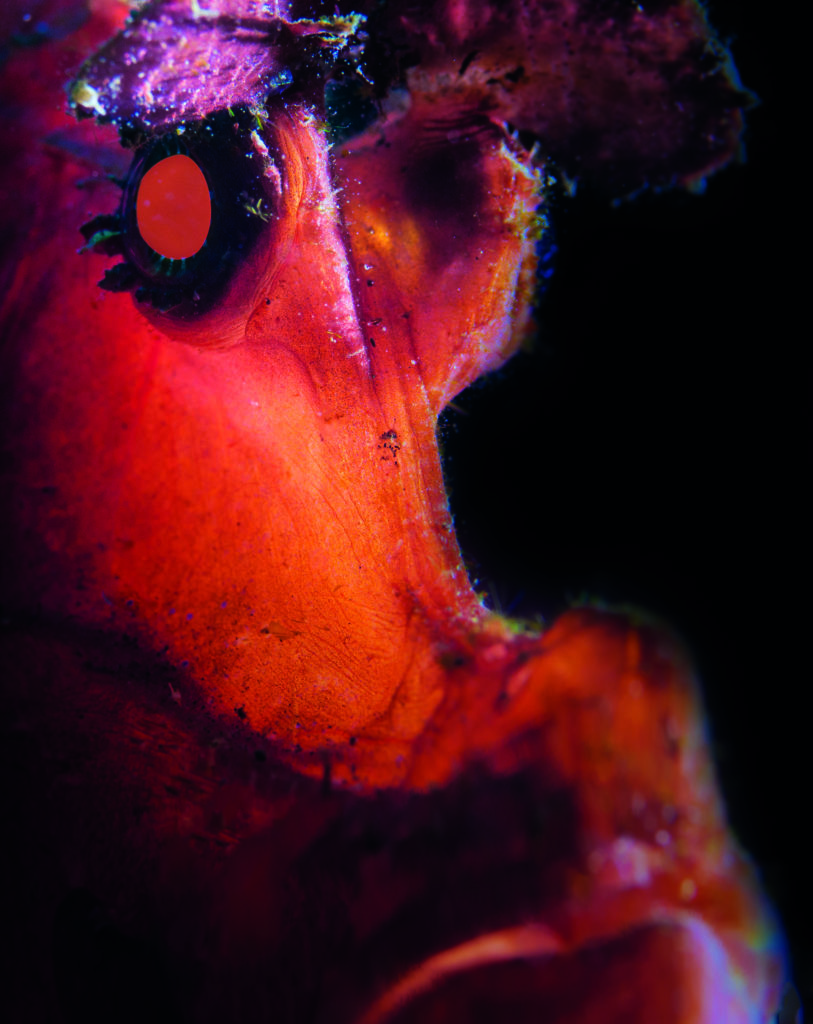
This one’s easy, and is probably the fundamental mistake most beginners trip up with. A famous war photographer once said: “If your pictures aren’t good enough, then you’re not close enough” and so make a conscious effort to move closer to your subject matter. This has a knock-on effect for your diving as you’ll need to raise your game with your buoyancy skills, and your movement and trim in the water as you get even closer to skittish subject matter. So it’s a win-win all around.
Turn The Camera 90 Degrees
Obvious when pointed out, however I’m as guilty as the next person in this area and have to remind myself to try and frame pertinent to the way the subjects are arranged in front of me, and I often forget to frame in the vertical or portrait format, but when I do I’m usually pleasantly surprised as to the outcome.
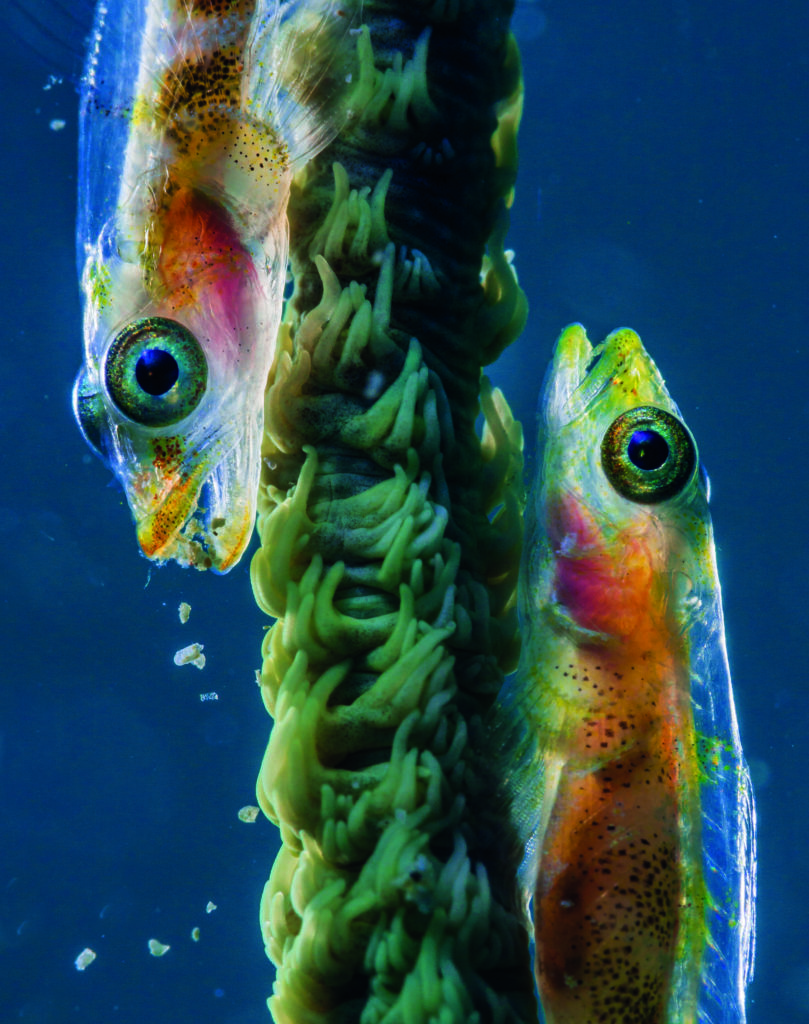
So maybe on land and underwater, practice framing both ways – your phone is perfect for this, as it’s not a skill that requires loads of kit, just a little attitude change that’s all.
Use The Rules, but Loosely
All photography and many other arts are linked to aesthetic guidelines that through the ages have proven to work visually, creating satisfying results for the viewer.
I’m not going to go into great detail here, but why not Google or search Wikipedia for the Rule of Thirds, the Golden Section or even the Rule of Odds, which I have on good authority is the go-to placement skill behind flower arranging!
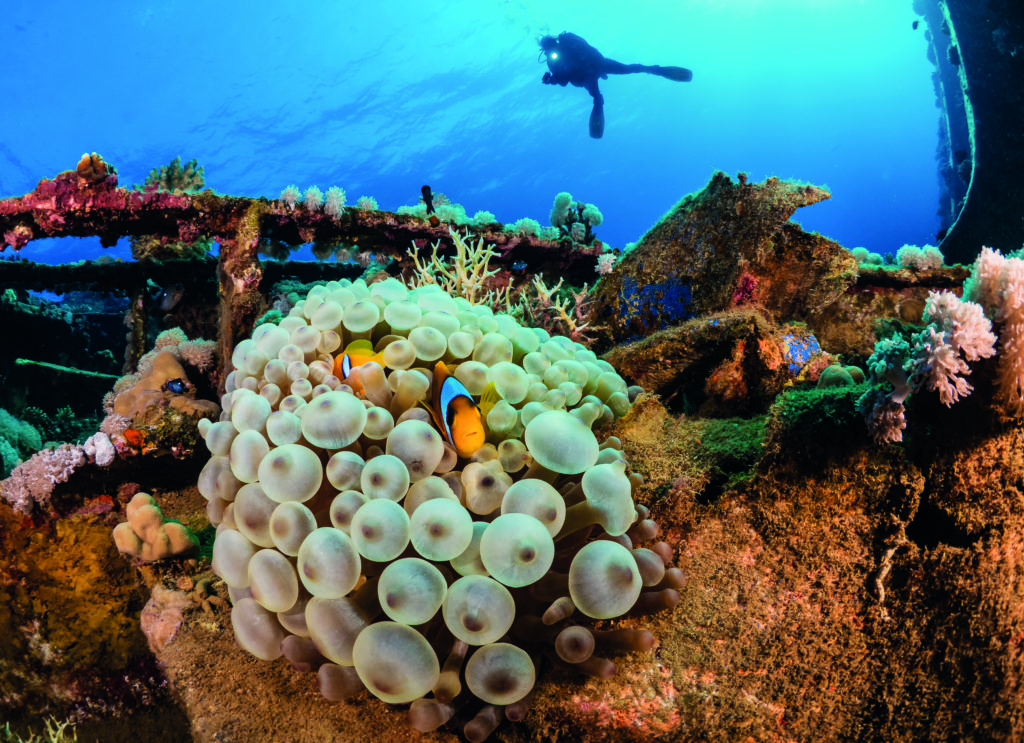
The thing about the most-practiced photographers is that they also have a feel for when these ‘rules’ can be broken too, so while the accepted wisdom is a great way to set you on the path to creative nirvana, it’s good to know when you can play fast and loose with age-old traditions. The only way you’ll know though is to practice wherever you go, and again there’s no excuses these days as most of us have a camera at hand 24/7 that just so happens to be a phone too.
Crop Creatively
We live in exciting times and the millennials are leading the way on social media with the biggest picture-sharing site on the planet. “What’s that then?” I hear you say.
I’m referring to Instagram, and unless you’ve been living in a shed communicating only via semaphore, then this graphical tour de force surely can’t have escaped your attention.
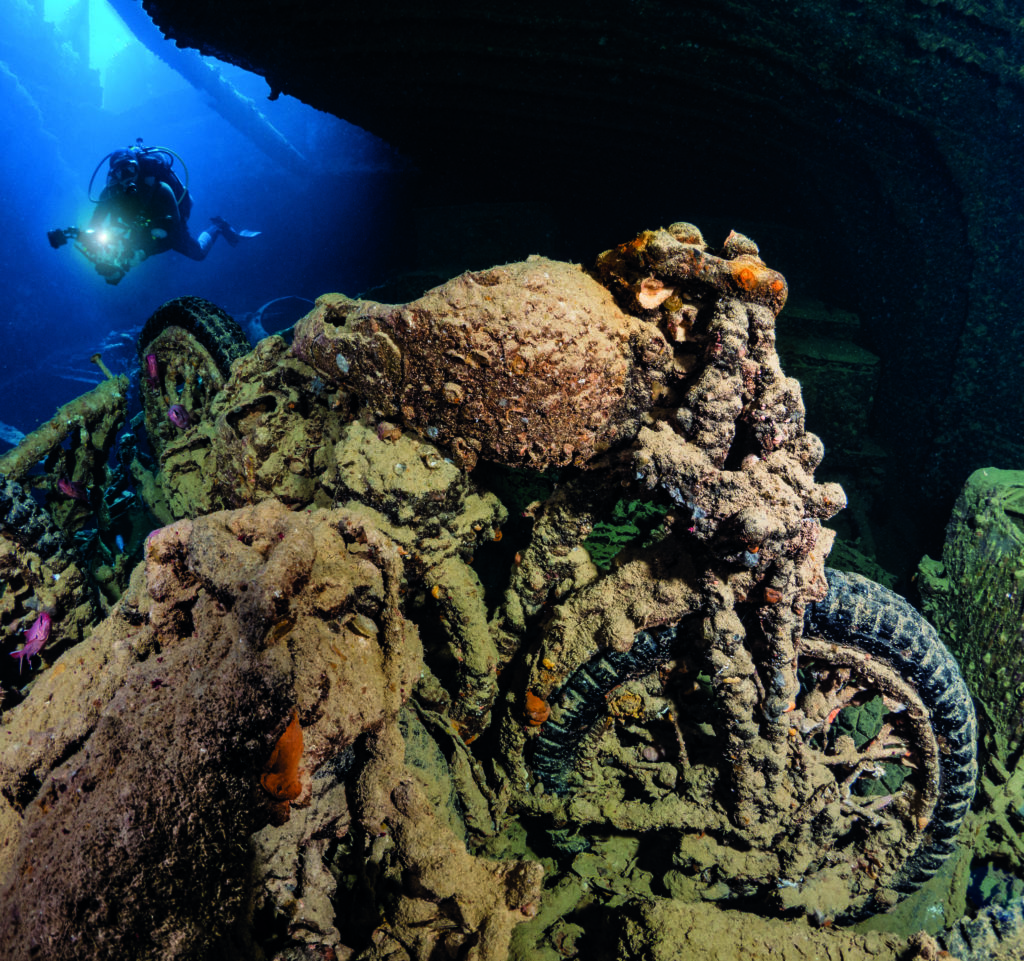
While you can share pictures on IG in any format you wish, the site became popular for its immediately recognisable square format.
This way of framing, while nothing new, has had a massive resurgence of late and been adopted by some of the most-creative people on the planet today.
I’m not suggesting that you only shoot and crop square from now on, but give it a go, set up your own Instagram account and crop away, you’ll be surprised how it makes you rethink your established thought patterns of graphical layout.
My friend Bertie Gregory, Nat Geo snapper and talented millennial, told me that NG are very big on pushing content, and IG is one of their primary channels in getting their content seen.
Shape, Form, Colour and Texture
Underwater we are lucky to be presented with a myriad of different choices to record. The shape of corals, fish and other marine life can catch our eye, and is definitely worth recording for that reason alone. As are the bright colours we encounter often set against a palette of different blues.
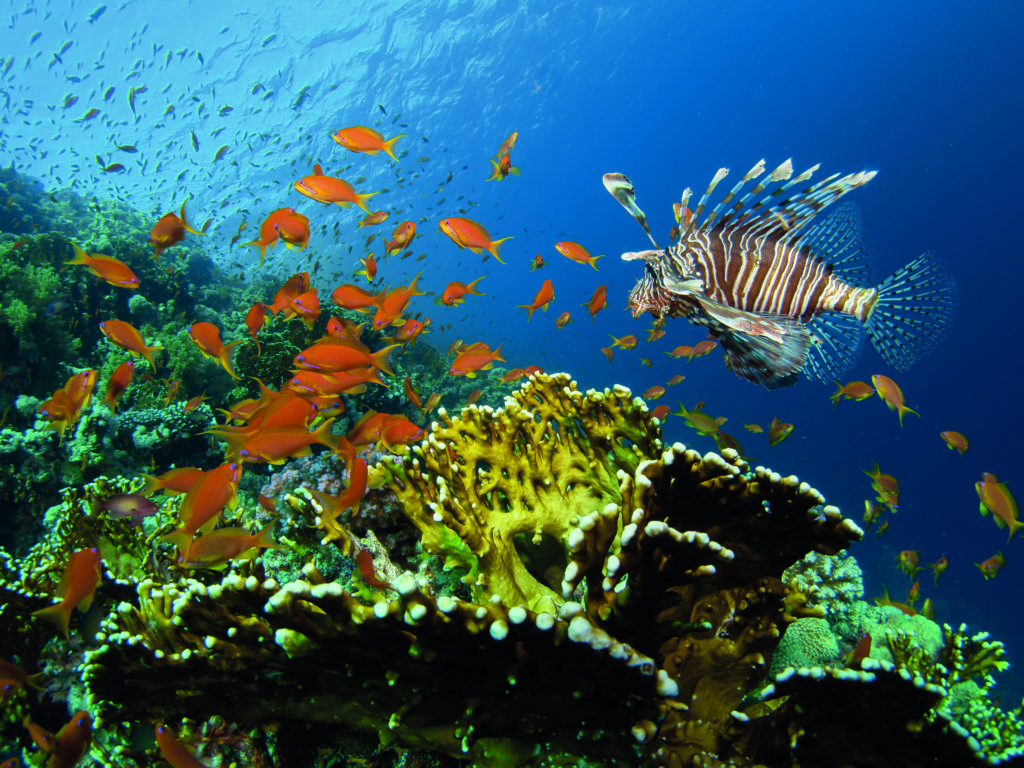
So when framing a colourful critter, make sure you have good separation between it and any other picture elements, something like a humble lionfish is lost against a reef backdrop, but comes alive when placed on a beautiful blue background, so you move and get your subject placement skills finetuned. Sometimes we struggle for things to shoot, but usually all it takes is a good helping of rule one and to get in closer for the intricate patterns in the hard and soft corals, and these abstract textures blown up big can make great pictures all on their own.
Get Comfortable
I’m kicking off with a tip that has nothing to do with framing or graphical placement, but nevertheless I believe is a vital component in getting great shots. If your mind is distracted by discomfort, you’re not in the best place mentally to make pictures, so on day one of your dive trip take time out to tweak those little things that can draw your attention away from your shots.
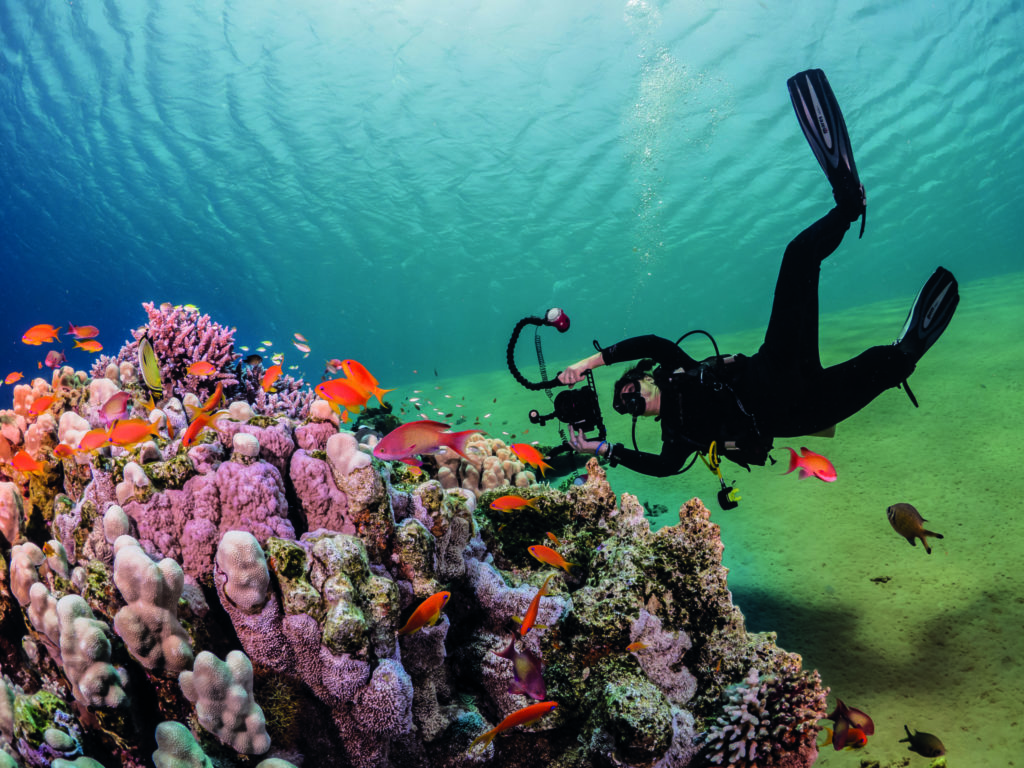
Do a thorough weight check, and by this I mean do two weight checks at least. Being properly weighted, not too heavy or light, is vital for good trim and movement and will, by default, make you more comfortable, breathing easier, becoming calmer and diving better.
And it goes without saying that your kit needs to fit you well. This will allow your brain to concentrate on your pictures and composition as you won’t find yourself overly task-loaded.
Another way to make yourself more comfortable is to pee when you need to – there’s nothing worse than dying for the loo, and it’s possibly one of the most-irksome distractions. You’ll either need to pee in your wetsuit, or get out and go if you’re diving dry. Timing is critical with this too – if you don’t like peeing in your suit or you’re diving dry, then time your fluid intake, as we all know how vital it is to keep properly hydrated while diving.
Use Divers In Your Pictures
Some underwater photographers are of the opinion that people spoil pictures by their very presence. I’m not sure I totally agree, and think that having the odd diver in your shot is a great way to convey, particularly to non-diving chums, the scale and splendour of our great hobby. It’s a visual link for the viewer to imagine themselves down with us underwater and if it encourages newcomers into our great hobby, then I’m all for it.
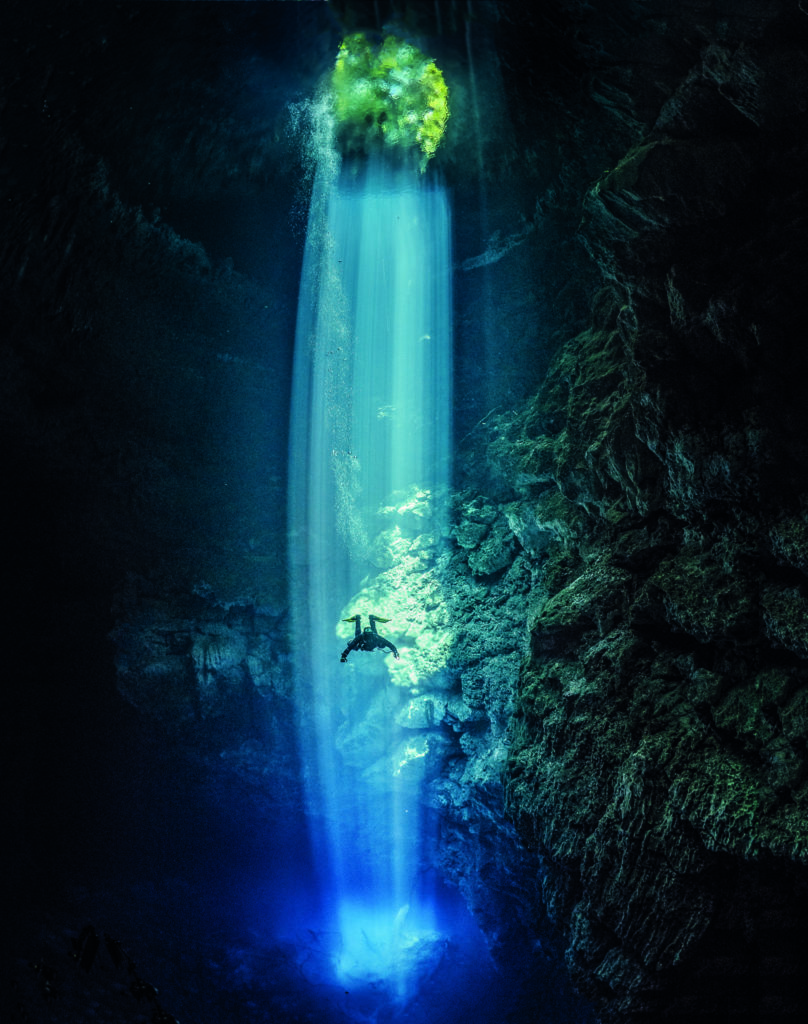
I will often use a diver very small in the picture, easy with a wide-angle or fisheye lens. And in the distance offset against a beautiful coral reef or inside a beam of light in a Mexican cenote, will exaggerate the sense of scale and wonder. Or maybe armed with a torch shining a light inside a dramatic wreck.
If using your buddy, then it’s helpful to prearrange some mutually understandable signs and signals, as it can be difficult when robbed of speech to get meaning across on the dive.
To save time I will often take the shot without the diver, and show the potential model on the camera screen where I need them to be.
Broaden Your Photographic Horizons
By this I mean try and consume content from all photographic genres, don’t just limit yourself to wildlife and underwater photography.
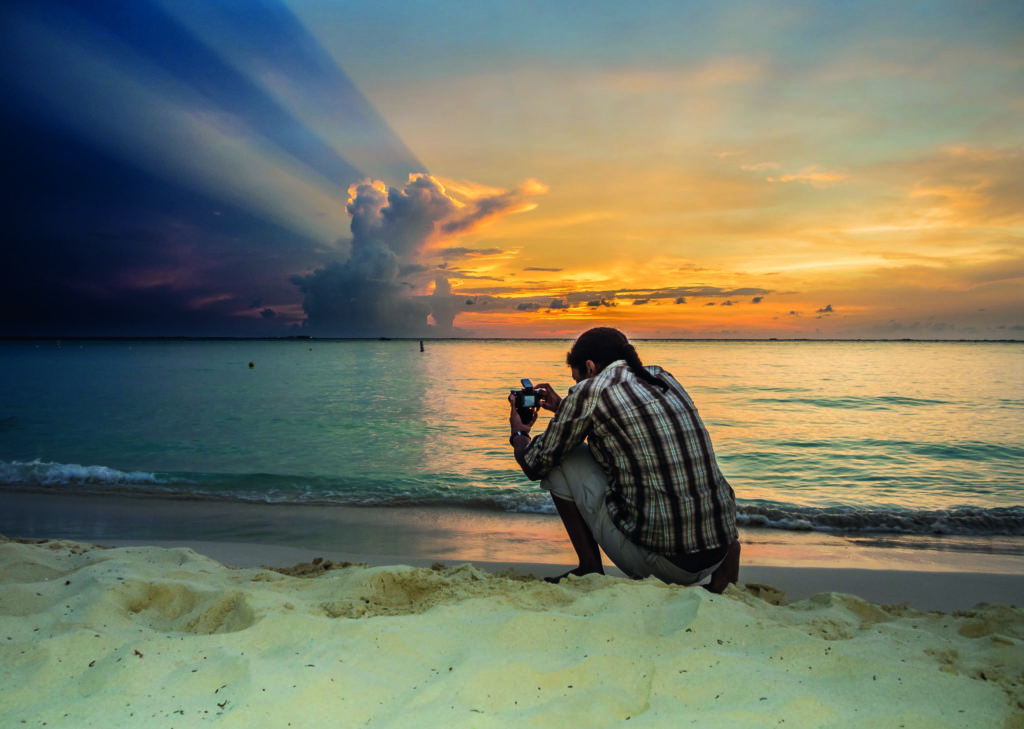
Check out the fields of landscape, portraiture, still-life, street and other diverse fields of the hobby, it will feed your creative nature and can only be of benefit. And there’s always opportunities for shooting great sunset shots on most dive trips.
Don’t be Scared of The Cliches
On land and underwater, certain trends come and go, and though you should be wary of copying and plagiarism, if a particular photo technique catches your eye, don’t be afraid to give it a go, even if the great and the good are now being a bit snobby about it.
On land, High Dynamic Range (HDR) photography has been done to death, but don’t let others put you off, it’s worth learning how to do as it’ll no doubt become fashionable again, and if you like it, then so what? Enjoy yourself as that’s what it’s all about at the end of the day.
And how can you lose? You’re learning a bit more about photography.
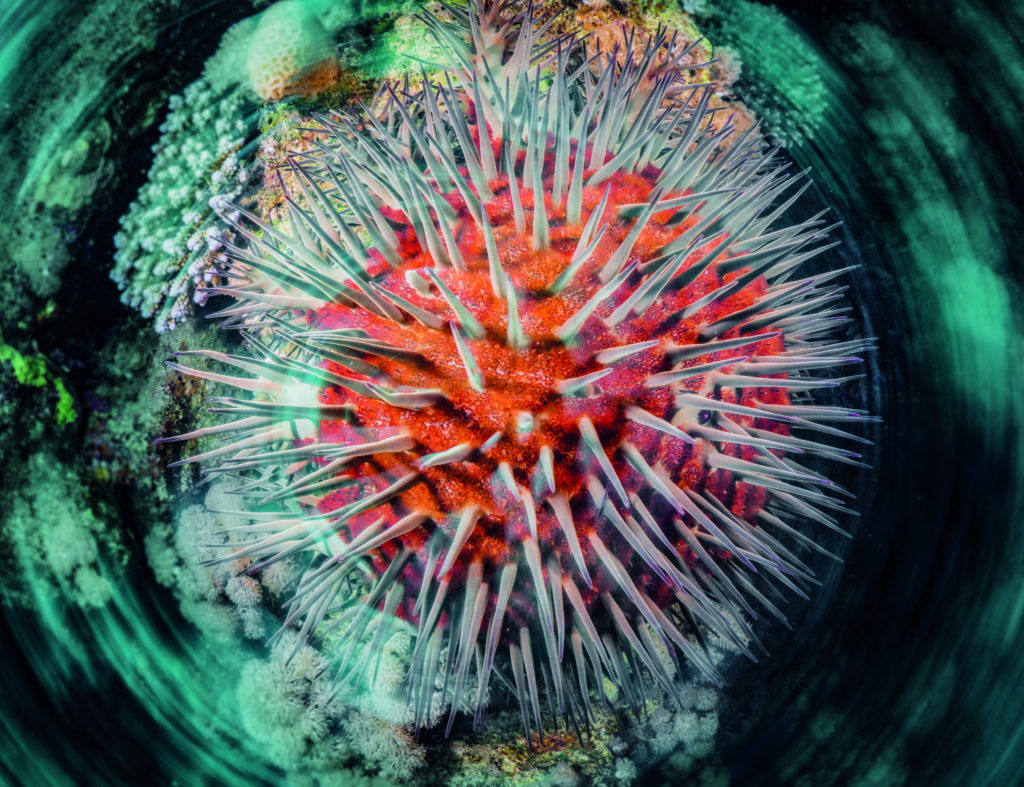
I’m almost addicted to twirls and motion-blur shots, as I love the sense of movement they portray. And when I show beginners how easy it is to achieve even with basic kit, and then you see how it ramps up their enthusiasm, making them keener to learn new things. And that’s very hard to criticise.
Go Beyond Fish ID
Last but not least, and something I bang on about loads on my trips, is to try and move beyond getting fish ID shots. Folk often get subject orientated and what I mean is that they see a creature and in their excitement to get the shot, they take a perfectly okay picture, correctly exposed and focused, but they may as well have just copied the picture out of the reef guide.
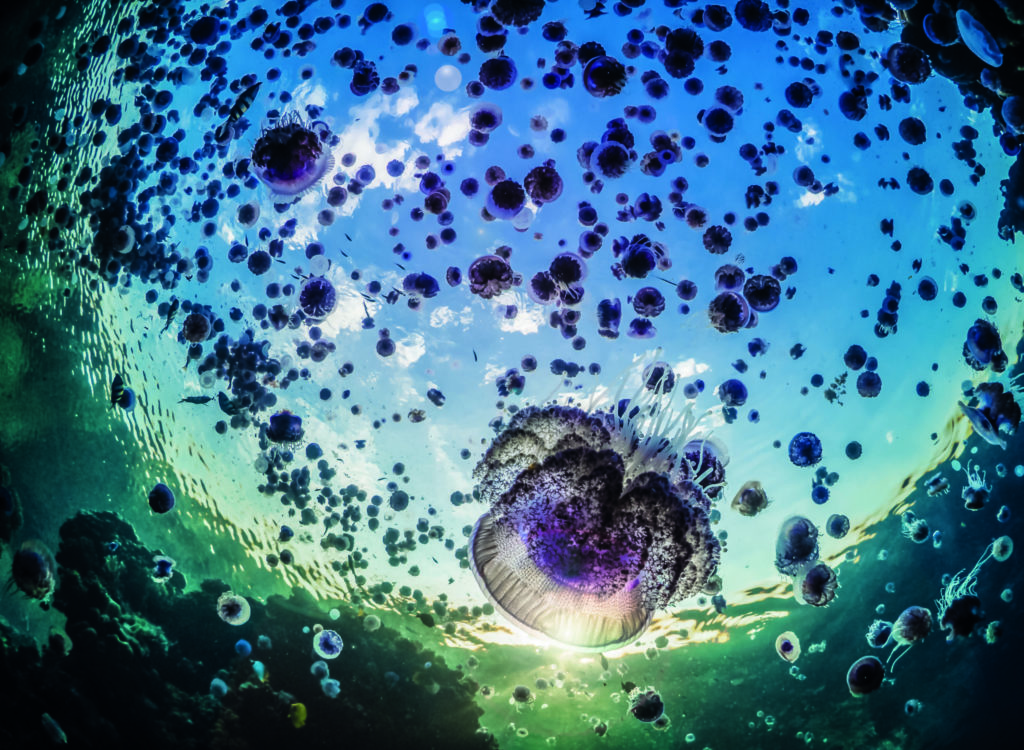
Now don’t get me wrong, as a fully paid-up fish geek I too take lots of fish ID shots and there’s absolutely nothing wrong with that, but it’s worth spending time with a subject and trying to get a picture worthy of your time and effort, that conveys drama, personality and a strong aesthetic sense, as these are the shots that people will remember most, and a lot of the time all it takes is a little patience and moving yourself into a better vantage point.
Duxy Escorted Trips
A great way to learn how to use new kit and develop your skills is on a dedicated trip. My escorted trips are for all and if you have a GoPro or compact, I can improve your skills and realise your full potential in an easy-going, relaxed environment. If you’re a more-experienced shooter, my itineraries and locations are carefully picked to be very photographically productive.
Duxy will be leading a Red Sea liveaboard in 2023 – book now.
Biography
Since returning from Egypt working as a guide in the early noughties, Duxy has been at the forefront of underwater photography technology and how it has changed the way we all now take underwater photographs.
Working as sales manager for the two leading underwater photography
retailers, and more lately as the photography travel specialist for a multi-award-winning dive travel agent, his light-hearted take on the iving world and underwater photography has resulted in him being a regular speaker at the Dive Shows and at clubs up and down the country, sharing his knowledge and experience with all levels and abilities of underwater photographer.
He likes nothing better than to get a beginner started on the route to rewarding pictures, and approaches the subject with an inclusive, rather than exclusive, manner. He now has more than 40 escorted trips under his belt and is continuing to develop new ways to pass on the knowledge and share the love. He can be found on Instagram and Twitter as @takeiteasyduxy and Facebook as Take iT Easy.
Photographs by Paul ‘Duxy’ Duxfield
